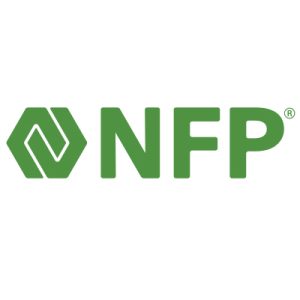There was a time when building a top-notch management team seemed to be a relatively straightforward task. Times, however, have certainly changed. Traditional benefit programs and merit pay systems often fall short as tools for attracting and retaining such talent. Banks of all sizes compete for experienced lenders with relationships/portfolios they would like to have at their bank. With the growing demand for quality performers, how can your bank secure the management team needed to ensure maximum bottom-line results?
Traditional qualified retirement plans such as 401(k) and defined benefit pension plans have typically provided rank and file employees with retirement income equaling 70 to 90% of final compensation (when combined with Social Security benefits). Not a bad reward for years of dedicated service. Yet, the same does not hold true for most bank executives. Due to limitations on contributions and benefits, these plans often provide executives with retirement income of only 30 to 50% of final pay – far below the retirement percentages of rank-and-file employees.
In growing numbers, community banks recognize the need to enhance traditional management/director compensation packages with supplemental benefits. Whether it be stock look-alike plans, stock awards or some other form of mid- to long-term cash awards or supplemental retirement benefit, careful consideration should be given to the strategy or combination of performance-based strategies that are most appropriate. For example, a deferred compensation plan with payments paid at three to five years or timed to when the officer’s children are college age can be highly valued by an officer who is not focused on a retirement benefit.
In addition, enhanced benefits such as supplemental disability or long-term care can be included. Then, when properly designed and administered, these plans can be a powerful tool in creating a more level playing field for both executives and directors and the bank itself.

Historically, many institutions made up shortfalls in executive benefits through nonqualified salary continuation plans (often called SERPs). These plans generally provide a monthly retirement benefit based on an executive’s long-term service to the bank. More recently, however, banks – recognizing the value of management incentives – have begun tying current and long-term compensation to bank performance. When properly designed, performance-driven incentive plans can:
- Align management goals and incentives with the annual strategic goals of the bank.
- Focus executives and employees in the areas that are key to the success of the bank in the short term and long term.
- Allow executives to share in the bank’s success.
- Provide competitive compensation.
- Enable the bank to attract, motivate and retain top talent.
While performance-driven benefit strategies can take various forms, they must comply with regulatory guidance on incentive compensation plans by providing incentives that appropriately balance risks and rewards in a manner that does not encourage imprudent risk-taking. Incentive plans should have earnings-based goals and strategic goals such as asset quality, capital raising, and core deposit growth. Plans that focus solely on earnings-based goals could encourage a focus on short-term profit without adequate consideration of risks.
With the cost of benefits continuing to rise and volatile investment returns, finding a reliable benefit-financing option can be a complex task. Implementing a bank-owned life insurance (BOLI) program can help your bank offset current and future costs of existing benefits (e.g., medical, group life) and new programs (e.g., incentive deferred compensation and supplemental retirement benefits).
Striking the proper balance between plan attractiveness to executives without excessive expense is also significant when designing the benefit plan. Financing employee benefits is a costly endeavor for banks of all sizes. With the cost of benefits continuing to rise and volatile investment returns, finding a reliable benefit-financing option can be a complex task. Implementing a bank-owned life insurance (BOLI) program can help your bank offset current and future costs of existing benefits (e.g., medical, group life) and new programs (e.g., incentive deferred compensation and supplemental retirement benefits).
Approximately 72% of New Mexico banks have implemented BOLI as a strategy to recover the cost of employee benefit plans based on FDIC data as of the first quarter of 2021. Our research, conducted in July 2021, shows that BOLI is an earning asset that currently generates a return in the range of 2.60% to 3.10% after all expenses are deducted, which translates into a tax-equivalent yield of 3.29% to 3.92% (assuming a 21% tax bracket). With its ability to minimize earnings pressure – while balancing liquidity and risk factors, as well as hedging against rate sensitivity – BOLI has emerged as a preferred financing vehicle for banks of all sizes.
The significant potential financial impact when your bank loses key employees or cannot attract additional resources quantifies and underscores the value and importance of retention, so it is critical that executives meaningfully and competitively compensate these employees. Banks without a strong corporate culture and a competitive compensation plan in place are at a higher risk of losing key employees and may have a potential retention problem. n
For a complementary analysis of effective compensation plans or a copy of recent educational presentations, please contact Trey Deupree, 972-672-8245 or Trey.Deupree@nfp.com.








